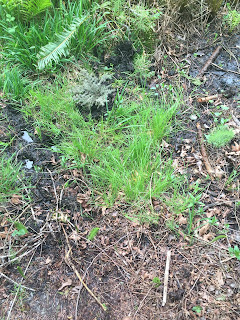I grew up in the San Francisco Bay Area in a suburban town.
I was able see some of the natural history along the coast as well as some of
the forests. One of the most distinct memories from my early childhood was on a
family trip to Calaveras Big Trees. There was one especially interesting tree
stump that was probably at least a couple hundred feet wide. That immediately
peaked my interest in the natural world, and I started enjoying our family road
trips to different natural places around the western region of the United
States. Another particularly memorable trip was a road trip through Colorado
and Utah, visiting Zion national park and Bryce Canyon. Our trip to Zion was
cut a little bit short due to some flash flooding and lighting, which was still
cool to watch as a kid. We also saw some of the more local natural beauty of
the region, such as the wetlands of Bodega Bay in the Marin headland north of
San Francisco, the redwoods in the Muir Woods national forest, and coastal
lands of Monterey and Pebble Beach.
My mother’s family used to always have a summer camping trip
to Yosemite National park every year when she was a kid, so much of my family
has been interested and could appreciate the natural beauty around them in the
Bay Area. This has allowed me to have a greater appreciate for the natural
world around me. I think this prior
experience speaks to my initial interest in this class about the natural
history of the northwest, and my desire to understand and appreciate the
natural beauty of the area that I spent four years of my life going to school
in.
It is late morning, around 11 am, overcast and slightly
breezy. This wasn’t the first time I had been to Ravenna Park. I had ran
through many time but had never ventured off the trails, mostly because I was
just trying to get home. This time I wandered slightly off the trail into a
small clearing between a couple western Hemlock’s and a red cedar. In front of
me there is some thick brush in front of me, with some pink colored flowers
just starting to bloom. The bushes are so thick that you cannot see further
down the hill towards the bottom of the ravine. However, I can see across the
ravine to a variety of different types of trees. It looks like there are some
big leaf maples on the other side of the ravine because their bark looks messy
and a similar color as some of the others I had seen previously. When looking
slightly to my left there was a large fallen tree truck that looks like it has
been there for a while. There is a ton of moss growing on the tree, and I would
imagine that there is a fair amount of insects living inside the log. Behind me
is the path and the steeper hillside of the side of the ravine. Lots of ferns
on the side of the hillside On my walk off the path towards my spot and I was
able to identify some western hemlock cones that are pictured below. I also notice a handful of different bird calls, but could not really see any of the birds making the noises. I suspect that the morning is the best time to hear all of these birds sing.
There was a lot going on in the one square meter by my feet.
I decided to walk up all the up to some mud. The mud was a much dark brown
color, and it made me wonder why the mud stopped where it did. There was a
bunch of short stalky, root looking plants sticking out of the ground.
Additionally there was lots of dried leaves, dried pine needles small twigs
along the floor. Some of the short root looking plants was larger than others.
Along these plants there was a small patch of longer grass. I’ll be interested
to how the spot at my feet changes from week to week.



No comments:
Post a Comment